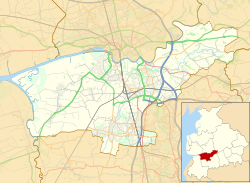| Walton Summit | |
|---|---|
 | |
Location within Lancashire | |
| District | |
| Shire county | |
| Region | |
| Country | England |
| Sovereign state | United Kingdom |
| Police | Lancashire |
| Fire | Lancashire |
| Ambulance | North West |
Walton Summit is an industrial area between Clayton Brook and Bamber Bridge, near Preston in Lancashire, England. It is in the South Ribble district. It is near the M61, M65 and M6 motorways and has a short length of single carriageway motorway from the M65/M61 roundabout. Walton Summit also includes the smaller area of Seed Lee.

